
First and Only Weekly Online Fanzine Devoted to the Life & Works of Edgar Rice Burroughs Since 1996 ~ Over 15,000 Web Pages in Archive presents Volume 5850 |

First and Only Weekly Online Fanzine Devoted to the Life & Works of Edgar Rice Burroughs Since 1996 ~ Over 15,000 Web Pages in Archive presents Volume 5850 |
Once there was a time, when there was always a new Tarzan comic book at the newsstands in West Germany - and I believe, in most other countries in western Europe too. For us kids back then it was as sure as the sun in the skies: Every two or for weeks there had to be a new Tarzan comic book. |
![]()
Click for larger images
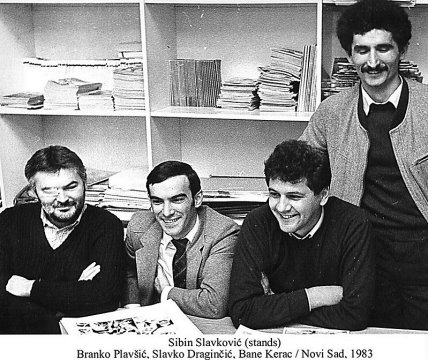
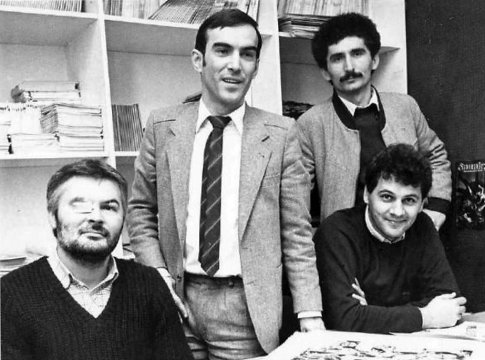
Publicity shots by Marketprint
from the 1980s. They show the four most important men of the YU Tarzan
team in Yugoslavia.
![]()
The are same guys are caught in a brawl, with Bane Kerac receiving a punch. This drawing is from the story "Krijumcari slonovace" – as is the case with the following harbor scene. |
These pictures are from the story
"Bitka za Opar."
This time Tarzan is at his beloved
Opar and has an unpleasent re-encounter
with an old foe, the long-presumed
dead Dagga Ramba.
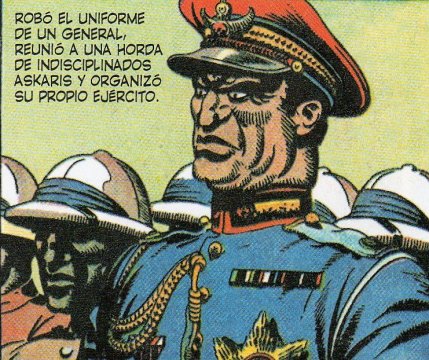 .
.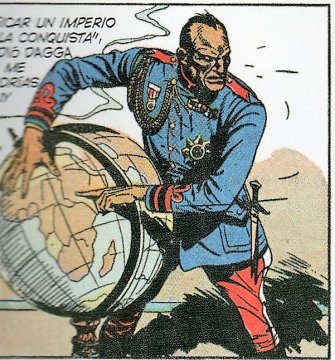

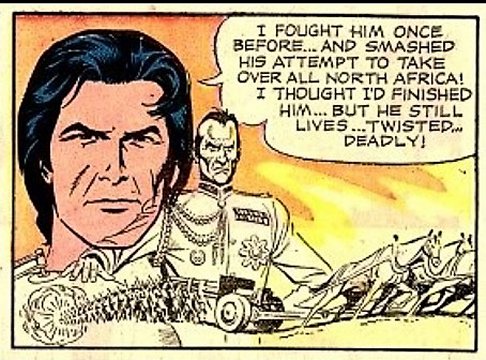

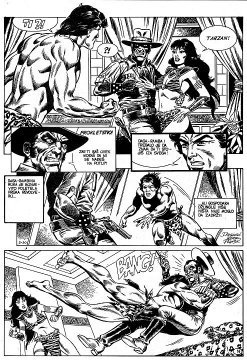 .
.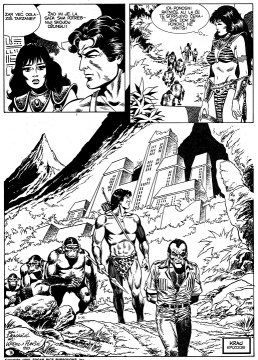 .
.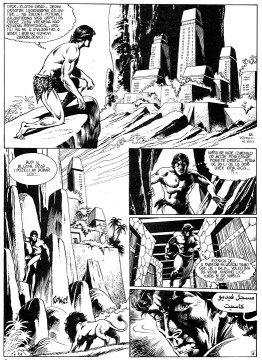
Invented in the 1940s by Burne Hogarth (top two panels) and in the 1960s revived by Russ Manning (the following three panels), this would be when the dictator was still alive in the eighties. But Opar proved to be an uncomfortable playground for Dagga Ramba: Again, for the third time in more than 40 years, he had to give in to Tarzan. |
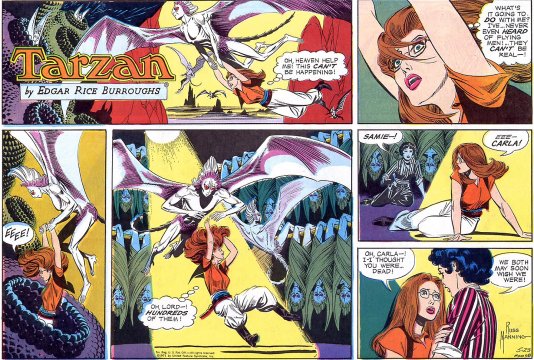 |
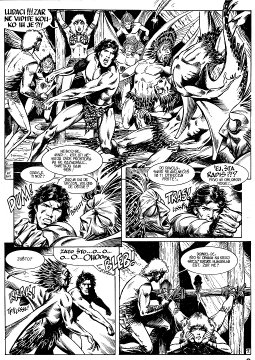 |
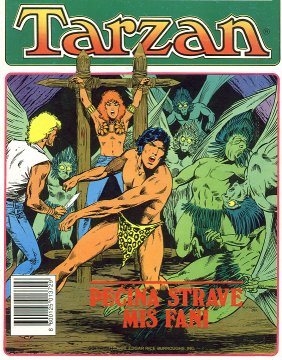 |
There are many more traces in YU Tarzan, that indicate to Russ Manning. The strange flying men of Pal-ul-Don, an invention by Manning, are among the most memorable of those motifs. Of course they remind of ERB's Wieroos of Caspak, but with their bird like habits they have a stark original character. The YU Tarzan team thought so too, and in the story "Pecina strave" they let these guys fly again. As ever they are on the hunt for women. And again they end up getting punished by the jungle lord – this time looking decidedly more human with their funny faces than their alien predecessors in the Manning stories (the last two illustrations). |
![]()
|
|
Ron de Laat’s Website: Holland meets ERB! is the best source concerning YU Tarzan on the net. He even has a complete list of all YU Tarzan stories with the titles in Serbian, Dutch and English and with the names of the authors and artists of each story. www.hollandmeetserb.nl |
![]()
Read the first of our YU-TARZAN
reprints in ERBzine

"Kraljica Opara" from the Yugoslavian
Tarzan No. 43 ~ 1985
www.erbzine.com/mag58/5851.html
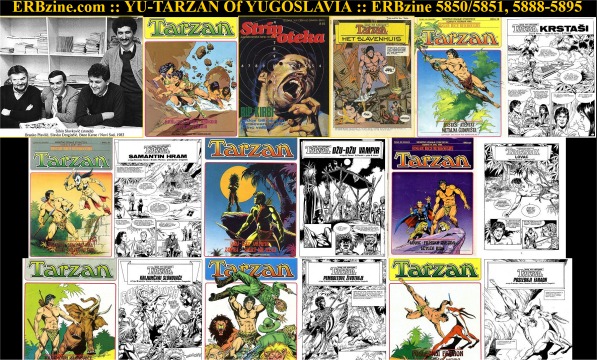
Click for full-size collage poster
![]()
Our Previous YugoSlav Tarzan
Series Starts at:
www.ERBzine.com/mag27/2750.html
![]()
YU-TARZAN OF YUGOSLAVIA COMICS
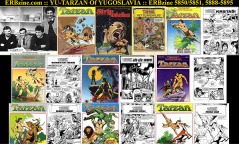
ERBzine
5850: Intro: A Beautiful Swan Song
ERBzine
5851: "Kraljica Opara" ~ No. 43 ~ 1985
ERBzine
5888: "The City of Slaves" ~ 1984
ERBzine
5889: "The Crusaders" ~ No. 34 ~ 1985
ERBzine
5890: "Samantha's Temple" ~ No. 35
ERBzine
5891: "Dxu Dzu Vampir" ~ No. 36
ERBzine
5892: "Lovac - The Hunter" ~ No. 37
ERBzine
5893: "Ivory Smugglers" ~ No. 39
ERBzine
5894: "Pembolt's Animals" ~ No. 40
ERBzine
5895: "The Last of the Pharaohs" ~ No. 41
![]()
![]()

![]()
![]()

![]()
BILL
HILLMAN
Visit
our thousands of other sites at:
BILL
and SUE-ON HILLMAN ECLECTIC STUDIO
ERB
Text, ERB Images and Tarzan® are ©Edgar Rice Burroughs, Inc.-
All Rights Reserved.
All
Original Work ©1996-2016/2018 by Bill Hillman and/or Contributing
Authors/Owners
No
part of this web site may be reproduced without permission from the respective
owners.